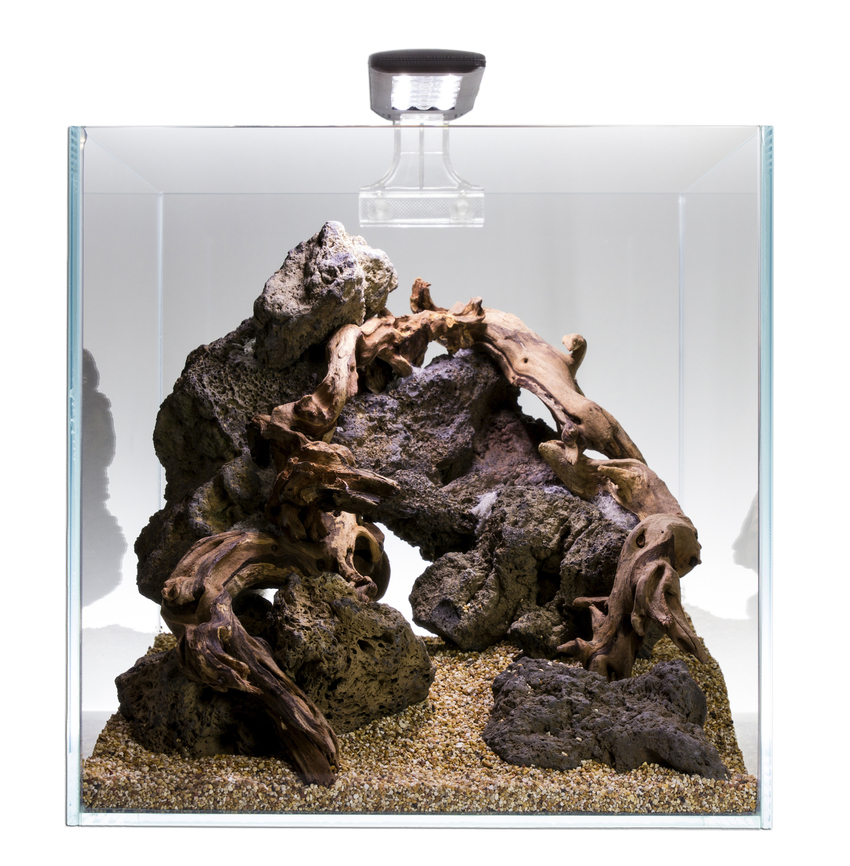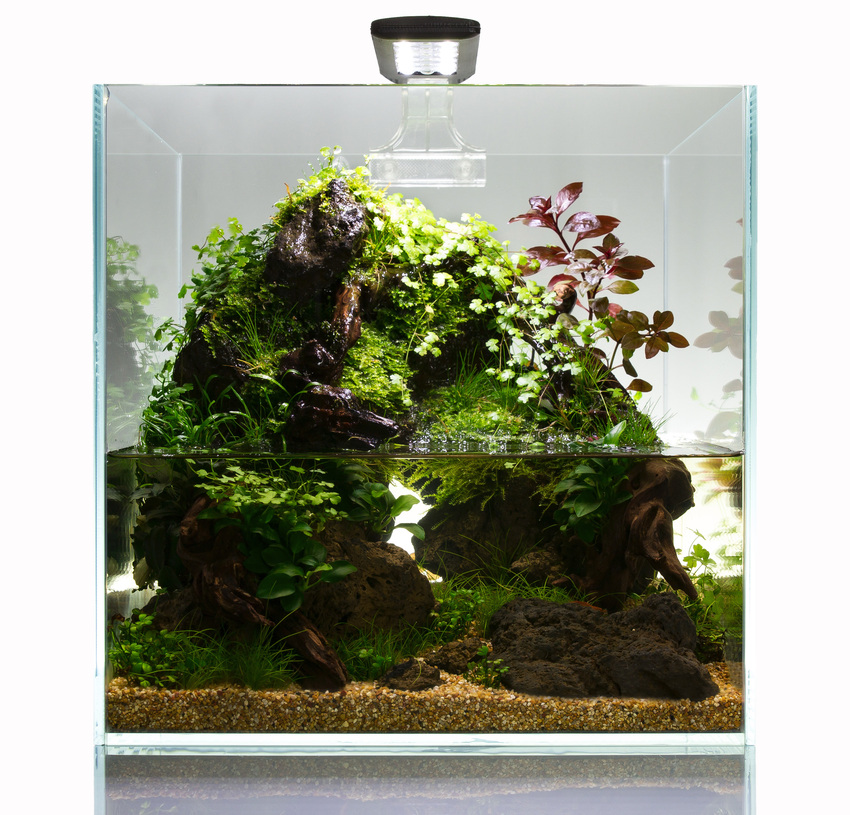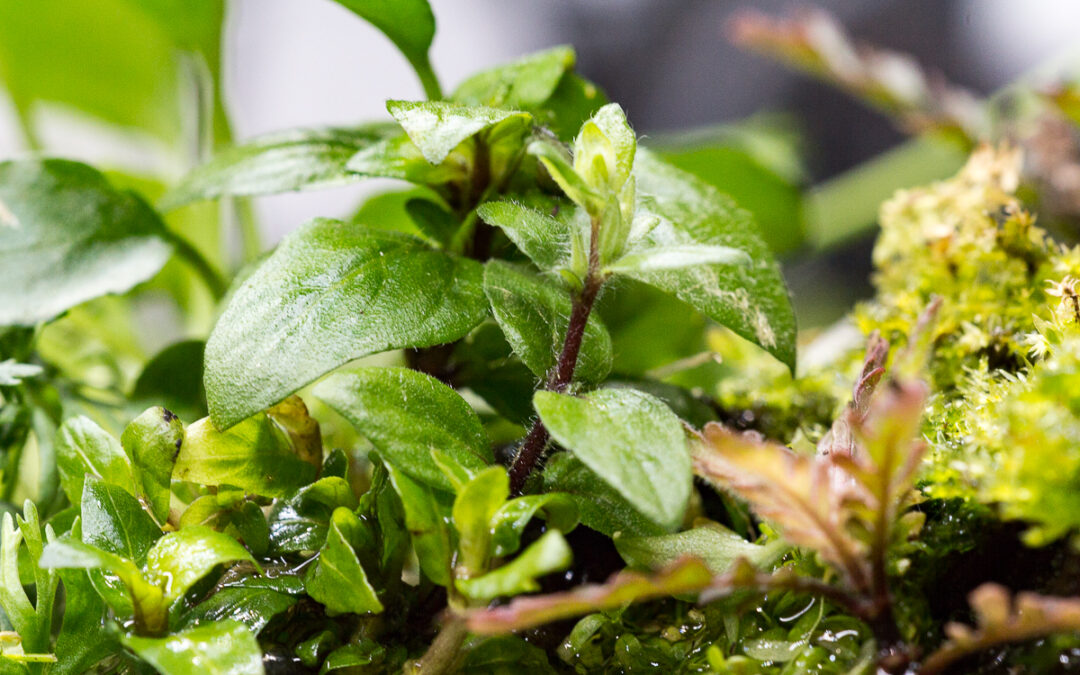The planted aquarium is much more than just a decorative element: it is a living ecosystem, a microcosm of life that develops before our eyes. Every plant, every rock, every fish is a piece of a puzzle that takes shape day after day, creating a work of art in constant evolution.
A planted aquarium is an opportunity to create a natural and relaxing environment at home, where you can observe the beauty of nature and learn to take care of it. We can relax and get lost in the sinuous movements of the plants swayed by the flow of the current, and find a moment of tranquility watching the lively movements of the fish swimming among the vegetation!
Setting up a plant-only aquarium
Aquatic plants not only give a touch of green to the environment, but also play an important role in the balance of the water and the health of the fish and other animals that live there. In a well-maintained aquarium, plants produce oxygen, absorb pollutants, and provide a safe refuge for fish.
To set up a planted aquarium, we must take into account three main factors: water, light, and carbon dioxide (CO2). These three elements are the basis of photosynthesis, the process by which plants build their structures and grow, also producing the precious oxygen.
We have already talked about water, but in general, we recommend filling the tank with osmosis water, such as that produced by Amtra Osmosis System 190, and then bring the carbonate hardness to 4-6 points with Amtra KH+ and GH+ salts.
The importance of the right amount of CO2 and light
Let’s now spend a few words about CO2 and light. The standard equipment of Amtra aquariums is sufficient for the cultivation of most aquatic plants, but the advice we give you is to add a small and easy-to-use CO2 system, such as Amtra CO2 System. Carbon dioxide, properly dosed, is useful both for plant growth and for stabilizing pH, with benefits for plants and fish health.

Photo by Roberto Bielli ITAU
Pay attention to the choice of backdrop
The substrate of the tank should be chosen of a size that is not too fine but not too rough either. The advice we can give you is to use an inert gravel like Amtra Amber Sand 1-2 mm.
This size ensures good water circulation in the substrate and oxygen supply to the roots of the plants. In cases of infrequent maintenance, a coarser substrate leads to the accumulation of a lot of debris, while a finer one can compact and create oxygen-free zones where harmful substances can develop for the tank’s inhabitants.

Photo by Roberto Bielli ITAU
Decorations and planting
For the decoration of the tank, it is possible to use wood and rocks arranged to recreate harmonious underwater environments. Once the furnishings have been chosen, it is time to add the plants.
The tallest and fastest-growing ones should be placed at the back of the tank, leaving the front space for shorter plants. Among the rocks or anchored to the wood, we can insert more robust plants that do not need to be planted at the bottom, such as the beautiful Anubias or Bucephalandra.
Once the plants have been add into the tank, it will be necessary to wait for the cycling time and start the fertilization protocol: if you want to deepen these topics, we have already talked about it here.
Now you are ready to enjoy your plant aquarium, we are sure it will give you enormous satisfaction!

Photo by Roberto Bielli ITAU
ABOUT THE AUTHOR

Lorenzo Tarocchi
Laurea Magistrale in Agriculture, Master degree in Aquaculture and Ichthiopathology
Born in 1986, Laurea Magistrale in Agriculture, Master degree in Aquaculture and Ichthiopathology. Passionate about fishing and everything that lives underwater, he began working in an Aquarium shop in 2010 and over the years in one of the major Italian ornamental fish facilities, in the meantime collaborating with the Natural History Museum of the University of Pisa and with some important companies of the sector.


